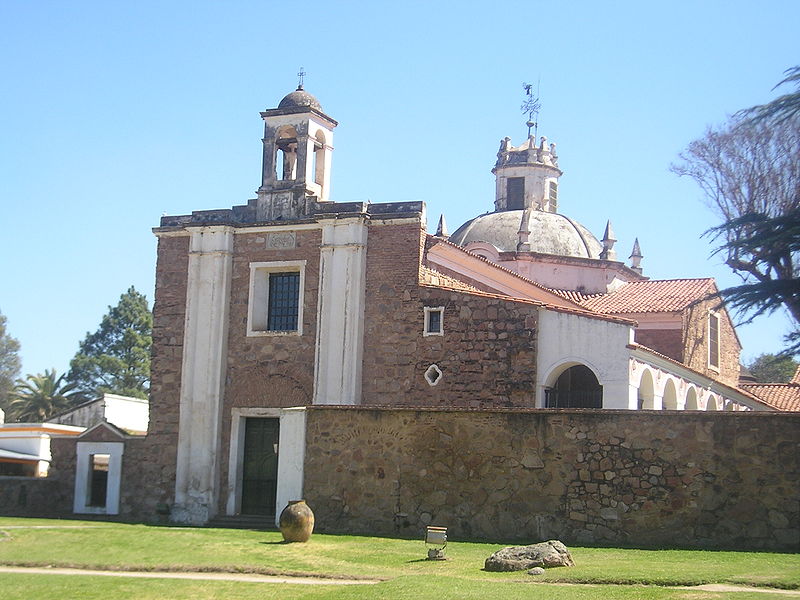Exploring the Jesuit Museum: A Journey into History

Nestled in the picturesque region of Jesús María, the Jesuit Museum represents a remarkable portal into the past, offering visitors an enlightening glimpse of the cultural and historical significance of the area. This magnificent estancia, originally established in the early 17th century by the Jesuit order, is a testament to their enduring legacy in South America.
As you approach the museum, the grandeur of its architecture captivates the senses. The structure features a central cloister patio—an architectural marvel of its time—paired with a chapel dating back to the 18th century that holds a prominent place in the building’s layout. Visitors are greeted by robust stone walls that have withstood the test of time, echoing stories of the past within their confines. An image of the Virgin of Montserrat graces the altar, providing a serene focal point for reflection.
The museum itself serves as a historical archive, showcasing a wealth of artifacts and objects that have been preserved with care. Guided tours allow visitors to delve into the Jesuits’ lifestyle, their customs, and the daily tools they employed. The first exhibition hall paints a vivid picture of life within the estancia, transporting guests back to a time when this site thrived as a center of education and cultural exchange.
One of the most fascinating tales emerging from this historical landscape is that of the establishment of the first vineyard and winery in Argentina, enhancing the region’s wine production legacy. The winery is a nod to the agricultural expertise the Jesuits shared with the indigenous communities, blending the old world with the new through innovative farming methods. This rich agrarian background comprises essential elements of the local economy and community identity.
The historical significance of the Jesuit Museum extends beyond its artifacts; it encompasses a narrative of cultural resilience. The Jesuits aimed to impart Western customs alongside Catholic teachings to the Indigenous people. Their systematic approach led to the creation of schools and educational frameworks that continue to resonate throughout the region. The estancias were crucial in sustaining these educational endeavors, ensuring the community flourished amidst the shifting tides of time.
Throughout your visit, you may explore the adjoining areas, including the serene park, which features a picturesque artificial lake. The natural surroundings provide a tranquil setting for contemplation and leisure, enticing visitors to encounter the harmonious blend of history and nature. Wildlife abounds, with a variety of birds chirping in the trees, adding to the peaceful ambiance.
Adventuring along the Jesuit trail unveils the five UNESCO World Heritage Site estancias, each narrating its unique chapter in Jesuit history. Notable among these sites are the Estancia Jesús María, founded in 1618, and Estancia Santa Catalina, which is distinguished for its architectural beauty and expansive grounds. The journey through these sites forms a rich tapestry that details the convergence of history, architecture, and nature.
In a quick jaunt across the Río Jesús María, one finds the Estancia de Jesús María where historical records illustrate the perseverance of the local population. Initially capturing the lands for Spanish colonization, the Jesuits later took over to establish their mission. Although the Jesuits were expelled in the 18th century, their architectural and cultural imprints remain indelible across the region.
Visitors to the Jesuit Museum today can expect not just a leisurely excursion, but a profound engagement with history that evolves with every step taken. The art displayed within speaks volumes, showcasing religious and historical pieces from as far back as the 16th century, each crafted with profound artistry and care.
A key highlight of your visit might be the impressive church inside the museum grounds. Its unfinished state is symbolic of the turbulent history of the Jesuit order, yet it retains a majestic aura with its beautifully adorned dome and intricate interior designs derived from various artistic traditions. The church was initially dedicated to San Isidro Labrador, emphasizing the agricultural heritage of the region.
The establishment has undergone various transformations over the years but has carefully preserved its essence. Following the Jesuit expulsion, the site transitioned into a private estate before becoming the seat of various historical projects, including a weapons factory during the Argentine War of Independence. It later became home to early Italian immigrants in the late 19th century, signifying the ongoing immigrant narrative that shapes Argentina’s identity.
In summary, the Jesuit Museum in Jesús María is an educational gem for tourists seeking to immerse themselves in the rich tapestry of Argentina’s colonial past. From its striking architecture to its engaging exhibits, this site brilliantly encapsulates the Jesuit legacy and its impact on the region. A visit here offers a valuable opportunity to not only encounter history but to appreciate the intricate connections between past and present that resonate within this remarkable locale.
Whether you are a local or a traveler, the Jesuit Museum awaits as an invitation to explore, reflect, and discover the profound impact of the Jesuit missions on the cultural landscape of South America.
